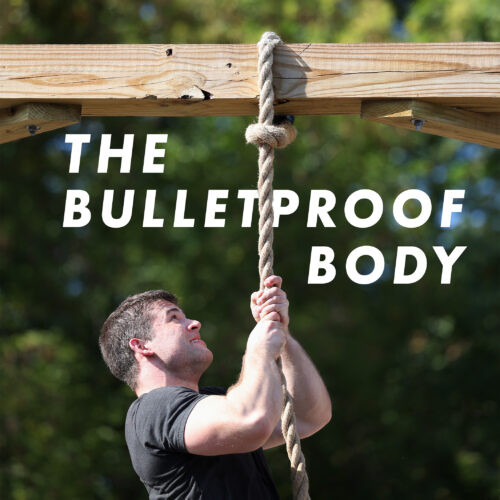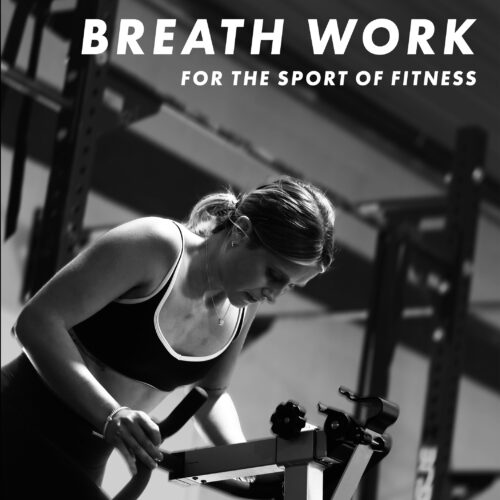Strength without mobility is meaningless. Mobility without strength is dangerous. You must have both.”
Christopher Sommer
PAILS & RAILS are two Functional Range Conditioning techniques created by Dr. Andreo Spina, that can allow you to express your strength, move better and prevent injury. And while they are often used in Physical Therapy clinics and rehab settings, they certainly have potential to be applied with greater intensity and specificity to improve performance. And THAT is what I care about.
My goal is to provide you with some CrossFit-specific examples of PAILS & RAILS. I tend to disregard things until I see how it can improve a metric I care about. I hope to connect the dots here so you can see how you or your athletes can get better at the Sport of Fitness via PAILS & RAILS.
PAILS
Progressive Angular Isometric Loading
(The working muscle is placed on stretch)
Useful Examples for improving specific movements for CrossFit Athletes and the muscle groups for which they improve the functional range…
- Pause Squats (or) Double Bounce Squats (quads, glutes, adductors)
- Bottom of Dip Hold (or) Deficit Push-Ups (chest, shoulders, triceps)
- Pausing Good Morning (or) Deficit Deadlifts (or) Bottom-Half RDLs (hamstrings, glutes, erectors)
- Weighted Dead Hangs (or) Scap Pull-Ups (Lats, teres, rhomboids, Lower trap)
RAILS
Regressive Angular Isometric Loading
(The working muscle is actively closing the joint)
Useful Examples for improving specific movements for CrossFit Athletes and the muscle groups for which they improve the functional range…
Abs, Hip Flexors, Quads
L-Sit (or) Tuck Hold
L-Sit Raises
Posterior Midline | Erectors, Glutes, Hamstrings
Sandbag Static Hold
Sorenson Hold
Scapular Retraction / Depression, Lats, Biceps
PVC Chest-to-Bar Static Hold
Ring Row Hold at Chest
Bent Over Row with Pause at Chest
Hand-Release Push-Up (squeeze at the bottom)
Shoulders, Scapular Control Musculature, Lower Trap, Erectors
Crossover Victory Hold
Crossover Reverse Fly
Sotts Press (Back or Front Rack)
Goblet Squat Back Extensions
Chest, Triceps, Shoulder Depression Musculature
Front Lever Ring (FLR) Hold
Ring Support Hold
Bar Support Hold
RAILS is something I recommend during almost all stretches, especially when being incorporated as part of a warm-up / movement prep section before you or your athlete lifts heavy.
The goal is to create tension (torque) to improve the active range. Torque is the difference between flexibility and mobility (passive and active range of motion).
An example of using RAILS in a warm-up is during an Elevated Cat Pose. Rather than relaxing and allowing your bodyweight to pull you into the stretch (passive), pull your shoulders open by activating your delts, pulling your shoulder blades back and down and squeezing your abs.
This teaches your body to create torque in end range and have the capability to open joints while working against an external load. In other words, snatching heavy weights is way cooler and more functional than getting deep in a passive stretch.
Why does Functional Range Conditioning Work?
One, they [PAILS & RAILS] help teach the body that your end range of motion is safe. By driving a limb into an object and creating a strong muscular contraction – your nervous system realizes that the position is actually safe to be in. This then allows your RAILs contraction to pull yourself into a deeper stretch, thus starting to expand your ranges.
-Kinstretch.com
Two, The muscle contractions on both sides of the joint help strengthen the end ranges, allowing them to become acquired actively over time.”
How Does Mobility Improve?
The answer is time & torque. Get in a position and spend time there, but also load it so it creates a stronger stimulus to drive change.
Mobility (like any other training metric) only improves with consistent exposure. The longer the exposure, the more often it occurs and the more intense it is the more likely it is you will adapt.
Related Read: Why Your Mobility Isn’t Improving
Related Read: Gender Differences in Mobility: A Cultural Discussion
-
 Bulletproof Body: Accessory Work for Functional Fitness (Program)Original price was: $99.99.$67.95Current price is: $67.95.
Bulletproof Body: Accessory Work for Functional Fitness (Program)Original price was: $99.99.$67.95Current price is: $67.95. -
 Breath Work for the Sport of Fitness (eBook)$19.95
Breath Work for the Sport of Fitness (eBook)$19.95
